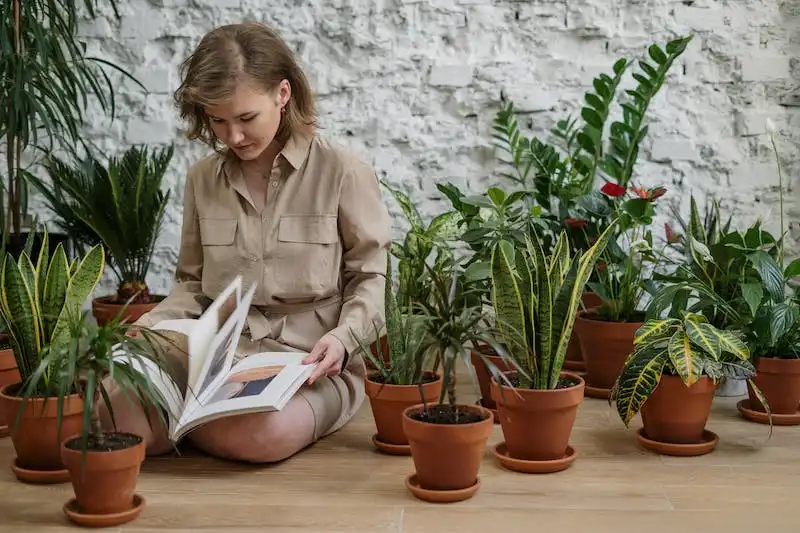The Brandywine is a variety of tomato that is highly prized by gardeners and home cooks alike. Known for its superb flavor and large, meaty fruits, Brandywine tomatoes are a popular choice for those looking to grow their own vegetables. These tomatoes are fairly easy to cultivate, requiring fertile soil, regular watering, and a bit of maintenance to keep them healthy and productive.
The Brandywine tomato belongs to the Solanaceae family, which includes other popular vegetables such as potatoes, eggplants, and peppers. The name “Brandywine” is derived from the Brandywine creek in Pennsylvania, where this unique tomato was first discovered in the late 1800s. Since then, it has gained national recognition and has become a staple in many home gardens across the country.
One of the unique features of Brandywine tomatoes is their large size. They typically grow to be 1-2 pounds in weight, which is much larger than most other tomato varieties. The fruits are a deep, dark red color and have a soft, juicy flesh that is perfect for slicing or cooking. The flavor of Brandywine tomatoes is also exceptional, with a rich and sweet taste that is full of nutrients and antioxidants.
When it comes to cultivation and care, Brandywine tomatoes require a few specific considerations. These plants are best grown in rich, well-draining soil that is high in organic matter. They also need a minimum of 6-8 hours of direct sunlight each day to thrive. Good airflow around the plants is important to prevent the spread of diseases, so be sure to space them at least 3-4 feet apart.
Brandywine tomatoes are biennials, meaning they have a two-year life cycle. In the first year, they produce vegetative growth, including leaves, stems, and roots. In the second year, they will flower and produce fruit. To avoid pests and diseases, it is recommended to provide proper support for the plants, such as cages or trellises, and to prune away any suckers that may form.
Transplanting Brandywine tomatoes should be done when the seedlings are about 6-8 weeks old, and all danger of frost has passed. The ideal soil temperature for transplanting is above 60°F (15.5°C). This ensures that the plants can establish themselves quickly and begin growing without any setbacks.
In conclusion, cultivating and caring for Brandywine tomato varieties requires some attention and maintenance, but the flavorful and nutritious fruits are well worth the effort. Whether you enjoy them fresh in a salad or use them for cooking or preserving, Brandywine tomatoes are a versatile and delicious addition to any garden or kitchen.
How to Plant and Grow Brandywine Tomatoes
Brandywine tomatoes are a popular variety of tomato known for their delicious flavor and unique characteristics. If you’re interested in growing your own Brandywine tomatoes, this article will provide you with all the information you need to get started.
Before you begin planting your Brandywine tomatoes, it’s important to learn more about the origins of this variety. Brandywine tomatoes are an heirloom variety that has been passed down through generations. They were first discovered in Ohio in the late 1800s and have since gained popularity for their exceptional taste.
When it comes to planting Brandywine tomatoes, it is best to wait until after the last frost of the season. Brandywine tomatoes are fairly tender and will not tolerate frost. Planting them too early can result in damaged or dying plants.
When selecting your Brandywine tomato seeds, it’s important to choose a reputable source. There are many different seed companies that offer Brandywine seeds, but not all of them deliver the same quality. Look for a company with a good reputation and positive customer reviews to guarantee a high-quality product.
Planting Brandywine tomatoes requires a lot of light, so choose a sunny location for your garden. Brandywine tomatoes also prefer well-drained soil that is rich in organic matter. Prepare the soil by adding compost or other organic material before planting.
When it comes to planting Brandywine tomatoes, it’s important to give each plant enough space to grow. Brandywine plants can become fairly large, with some varieties reaching up to 9 feet in height. Be sure to space your plants at least 3 feet apart to allow for proper growth.
Brandywine tomatoes are known to be fairly disease-resistant, but it’s still important to provide them with proper care and support. Use cages or stakes to support the plants and keep them off the ground. This will help prevent diseases and ensure healthy growth.
Brandywine tomatoes are indeterminate tomato plants, which means they will continue to produce fruit throughout the growing season. Be sure to regularly check for ripe fruit and harvest as needed. Brandywine tomatoes are ready to be picked when they are slightly soft to the touch and have a deep red or pink color.
If you’re interested in preserving your Brandywine tomatoes, there are many different methods you can try. You can can or freeze them to enjoy throughout the year, or you can make them into sauces, salsas, or even tomato juice.
In summary, growing Brandywine tomatoes can be both fun and rewarding. With the right information and care, you can enjoy these delicious tomatoes in your own garden. So why not give it a try and experience the unique flavor and characteristics of Brandywine tomatoes yourself?
What You’ll Learn
In this article, you will learn all about the tender and flavorful Brandywine tomato varieties. We’ll cover their origin, characteristics, and how to care for them. Additionally, you will find information on how to avoid common mistakes in growing Brandywine tomatoes, as well as tips for managing pests and diseases. We will also provide instructions on when and how to harvest these beautiful tomatoes, as well as some delicious recipes to try with them.
You will discover the origins of the Brandywine tomato, which is a Kentucky heirloom variety known for its large fruit and rich, fruity flavor. We will discuss the different varieties available, including both the red and yellow varieties. We will demonstrate how to recognize and choose the best Brandywine tomatoes, including their size, shape, and color.
You will learn how to plant Brandywine tomatoes, including the best locations for planting and the ideal time to do so. We will provide tips for starting Brandywine tomatoes from seedlings, including how to care for them in a greenhouse or indoors. We will also discuss the options for purchasing Brandywine tomato seedlings and provide recommendations for trusted seed suppliers.
We will cover the specific care instructions for growing Brandywine tomatoes, including watering, fertilizing, and supporting the plants. We will explain how to manage common issues such as pests, diseases, and suckers. You will also learn about the different characteristics of Brandywine tomatoes, such as their long growing season and their tendency to produce larger fruits. We will provide tips for extending the growing season and maximizing the production of Brandywine tomatoes.
To give you a quick reference guide, we will include a table summarizing the key features of different Brandywine tomato varieties. This will help you choose the best variety for your garden and taste preferences. We will also provide a profile of the original ‘Brandywine’ tomato, showcasing its unique characteristics and origins.
You will also learn about the best companions for Brandywine tomatoes, including other plants that can be grown alongside them to enhance their growth and flavor. We will discuss the advantages of planting herbs and flowers around Brandywines, as well as some specific combinations that work well together.
Finally, we will share some beautiful photos of Brandywine tomatoes, showcasing their vibrant colors and distinctive shape. We will provide tips for taking care of the harvested tomatoes and offer suggestions for using them in delicious recipes. Whether you want to enjoy them fresh in salads or preserve them for later use, we’ll have some great ideas for you.
What Are ‘Brandywine’ Tomatoes
‘Brandywine’ tomatoes are a popular variety of dark, pink, beefsteak tomatoes. They are known for their large size and excellent flavor, making them a favorite among tomato enthusiasts. Originally from Ohio, these tomatoes have a rich history and have been enjoyed by gardeners and cooks for many years.
The flesh of ‘Brandywine’ tomatoes is meaty and juicy, with a superb flavor that is both sweet and tangy. The tomatoes have a soft texture and their thick shoulders make them perfect for cooking or eating fresh, whether sliced on a sandwich or added to a salad.
‘Brandywine’ tomatoes are indeterminate, meaning they continue to grow and produce fruit throughout the summer season. It is important to provide support for the plants, such as staking or using a tomato cage, to prevent the vines from becoming tangled and to promote healthy growth.
When it comes to caring for ‘Brandywine’ tomatoes, organic practices are often recommended. These tomatoes can be grown from seeds or purchased as seedlings. If starting from seeds, it is best to begin seeding indoors several weeks before the last frost date. ‘Brandywine’ tomatoes require a lot of light and heat to germinate and grow, so make sure to provide them with a bright and warm environment.
Once the danger of frost has passed, ‘Brandywine’ tomatoes can be planted in the garden. They prefer a sunny location with well-draining soil. When transplanting seedlings into the ground, dig a hole deep enough to cover the stem up to the first set of leaves, removing any lower leaves beforehand.
‘Brandywine’ tomatoes require regular watering, especially during dry spells. It is important to water at the base of the plant and avoid getting the leaves wet, as this can lead to disease. Mulching around the base of the plant can help conserve moisture and prevent weeds.
Pruning and managing the plants is also important for a successful harvest. By removing suckers and thinning out the foliage, air circulation is improved and the plants are less susceptible to disease. Regularly check for pests and provide necessary protection if needed.
To ensure a good yield and ripen the fruits fully, it is recommended to pinch off any flowers that appear late in the season. This will allow the plant to direct its energy towards ripening the existing fruits. If you have a shorter growing season, you can also try removing some of the leaves above the fruits to increase sunlight exposure and help them ripen quicker.
Harvest ‘Brandywine’ tomatoes when they are fully ripe, as they will not continue to ripen after being picked. They are considered ripe when their color has deepened from pink to a slightly reddish hue and they have a slight give when gently squeezed. The flavor of ‘Brandywine’ tomatoes is at its best when they are enjoyed fresh.
Whether you are a beginner or an experienced gardener, ‘Brandywine’ tomatoes can be a rewarding addition to your garden. With their rich history and outstanding flavor, they have earned a special status in the tomato market. Try growing ‘Brandywine’ tomatoes this summer and discover the satisfaction of growing and enjoying these delicious fruits.
For more information on how to care for ‘Brandywine’ tomatoes, including tips on preserving their harvest and recipes to showcase their flavor, there are many resources available online and in gardening books. Explore the origins and history of ‘Brandywine’ tomatoes, and learn about different ways to enjoy these tasty fruits. Seed companies and nurseries often offer specific instructions and advice for growing ‘Brandywine’ tomatoes, ensuring a successful gardening experience.




